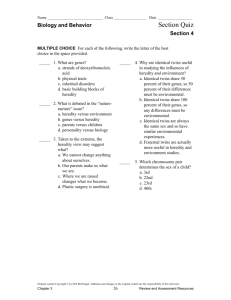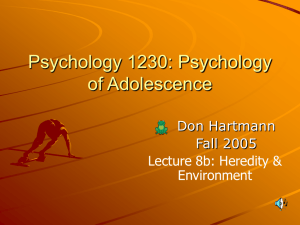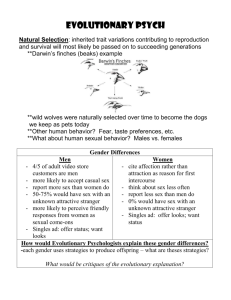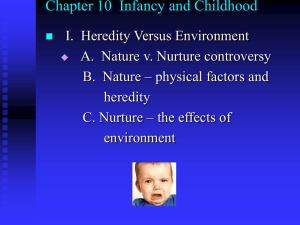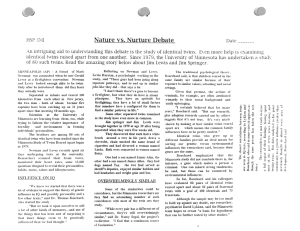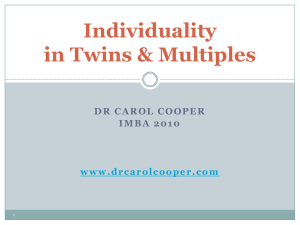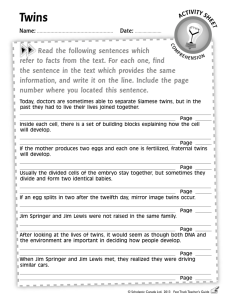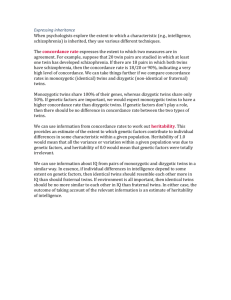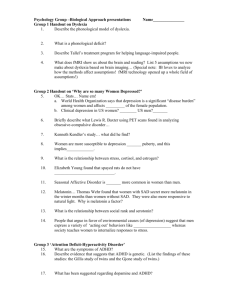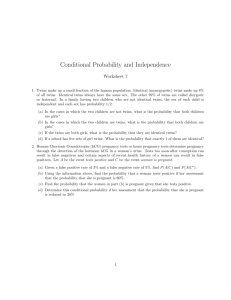Introduction
advertisement
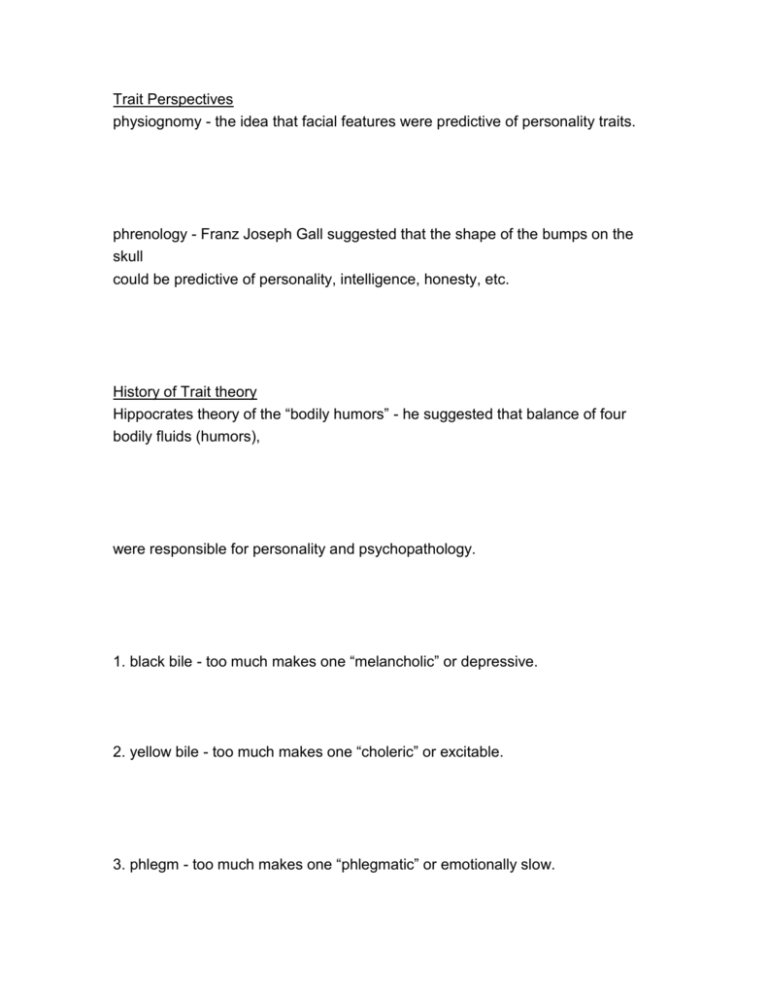
Trait Perspectives physiognomy - the idea that facial features were predictive of personality traits. phrenology - Franz Joseph Gall suggested that the shape of the bumps on the skull could be predictive of personality, intelligence, honesty, etc. History of Trait theory Hippocrates theory of the “bodily humors” - he suggested that balance of four bodily fluids (humors), were responsible for personality and psychopathology. 1. black bile - too much makes one “melancholic” or depressive. 2. yellow bile - too much makes one “choleric” or excitable. 3. phlegm - too much makes one “phlegmatic” or emotionally slow. 4. blood - a predominance makes one “sanguine” or easy going and happy. Immanuel Kant’s “typology” - later on, Kant elaborated on these ideas and thought of these tendencies in terms of discreet “types.” Wilhelm Wundt’s two “dimensions” - in the late 1800s, Wundt transformed Kant’s typology into a two “dimensional” system, with the dimensions being emotional/non-emotional and changeable-unchangeable. Eysenck builds of Wundt’s work - (mid 1900s) changes the dimension names to neuroticism and extraversion and, applies experimentation and modern statistical methods to build an “empirically based” theory. Francis Galton - (late 1800s) had an interest in individual differences and 1. loved to measure things. 2. had a “nativist” view - the idea that we are, to a great extent, born to be what we are. 3. He coined the term “nature - nurture.” 4. supported "eugenics" - encouraging the best and brightest to have more offspring to improve the species, actually a popular idea among scientists of the time. 5. developed the concept of correlation - by measuring traits like visual acuity and reaction time, and plotting them, on a “scatterplot,” he developed the “CONCEPT” of correlation. Karl Pearson - later developed the “correlation coefficient,” a way to numerically express the strength and direction of a correlation. Heredity behavior genetics - modern science that studies the complex ongoing interaction between heredity and environment. the “Jims” (Jim Springer and Jim Lewis) a dramatic example of how identical twins reared apart grew up to be amazingly similar. heredity - passing on of traits from one generation to the next, is often studied in “twins.” Monozygotic (MZ) twins - share 100% of their genes, also called “identical” twins. Dizygotic (DZ) twins - share about half of their genes, like any two siblings, also called “fraternal” twins. Heritability estimate “h2” - for a given trait, the percentage (proportion) of variance (differences between individuals) in a population attributable to heredity. Environment - behavior geneticists are also interested in the influence of the environment on how similar or different twins and other relatives are. Two types of twin studies: 1. monozygotic twins reared apart vs. reared together (MZA vs. MZT) in this type of study, the MZA correlation is the heritability estimate “h2”. 2. monozygotic twins vs. dizygotic twins (MZ vs. DZ) in this type of study, the heritability estimate is “h2” = 2(rmz - rdz). In the MZ vs. DZ study a “shared environment” index can be computed as “s2” = rmz - 2(rmz - rdz), Shared environment estimate “S2” - for a given trait, the percentage (proportion) of variance, (differences between individuals) in a population attributable to shared environment. “shared environment” vs. “nonshared environment” “shared environment” - things that siblings would likely have in common, such as religion, schools attended, parenting, socioeconomic status, etc. “Nonshared environment” - things that siblings would not necessarily share such as becoming interested in a sport or hobby, joining a “gang,” being in an accident, or being the victim of crime or disease. Surprisingly - researchers have found that very little of environmental influence reflects "shared environment," Our unique (non-shared) experiences impact us more than family, parenting, and other “shared” influences. Typical personality correlations for MZ twin pairs (MZA or MZT) run in the .4 to .6 range, typical personality correlations for DZ twin pairs run about half that, in the .2 to .4 range.

